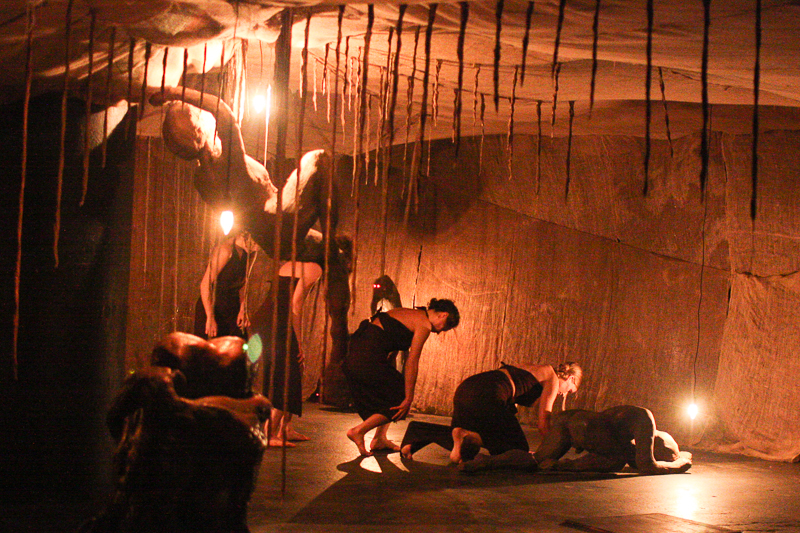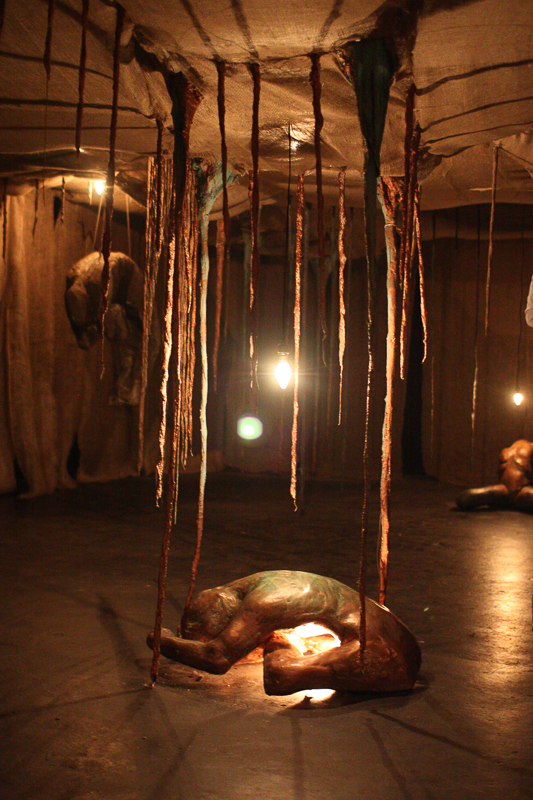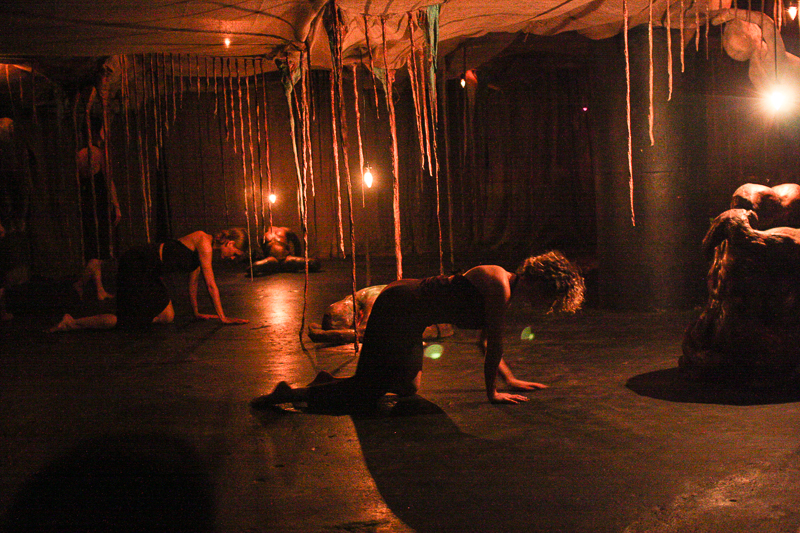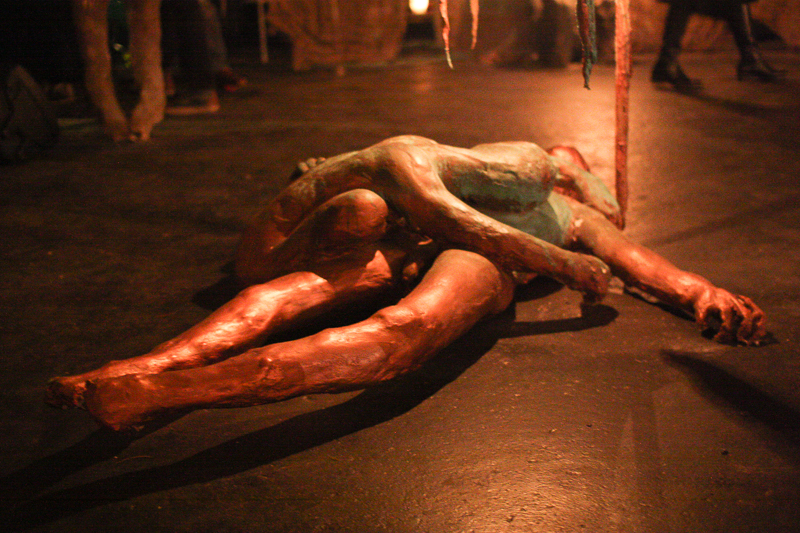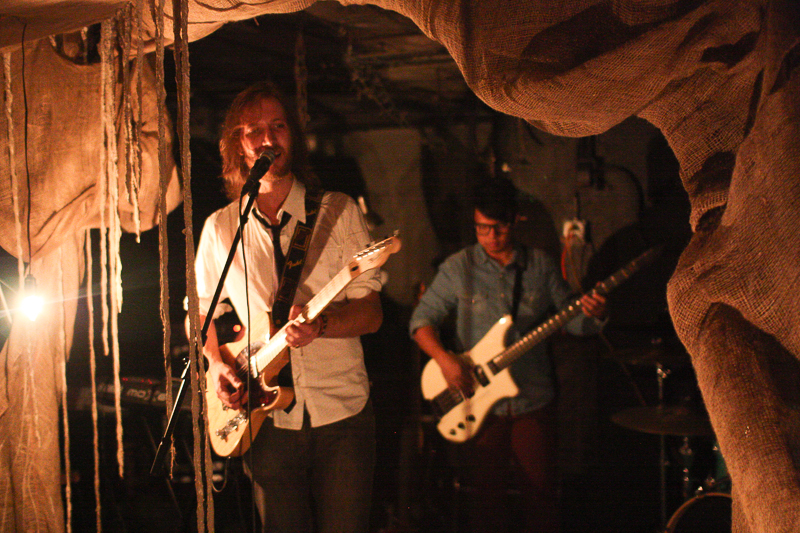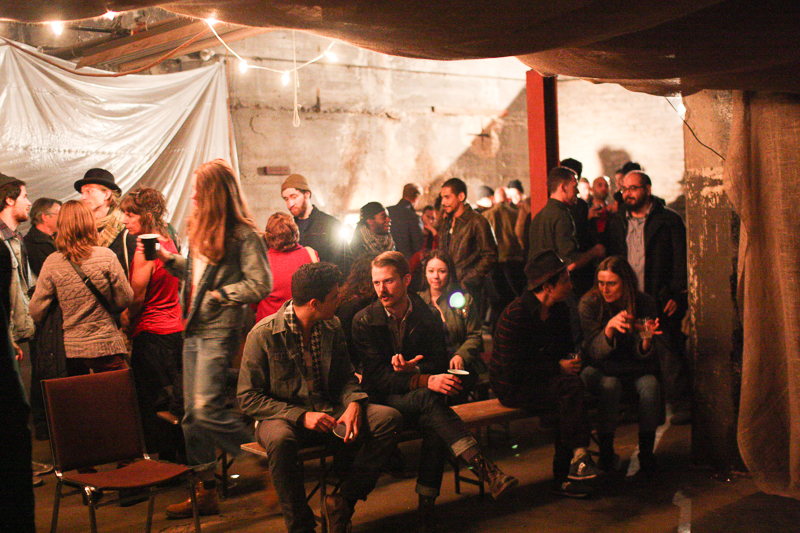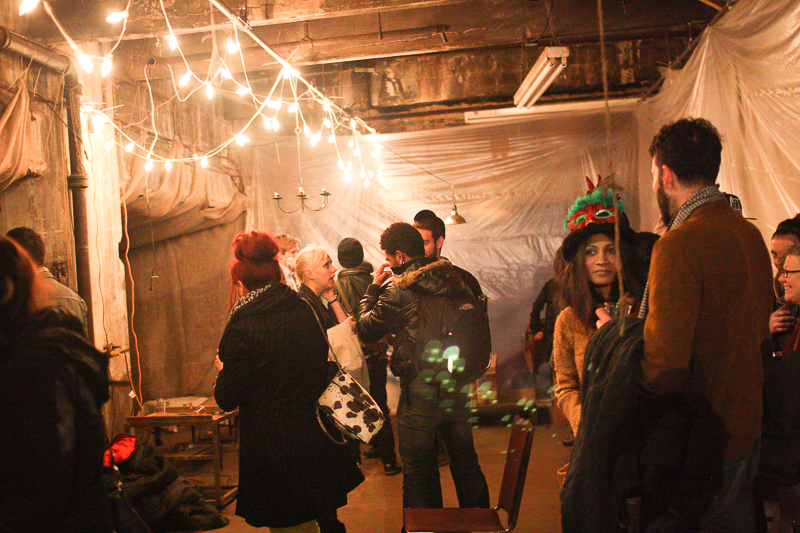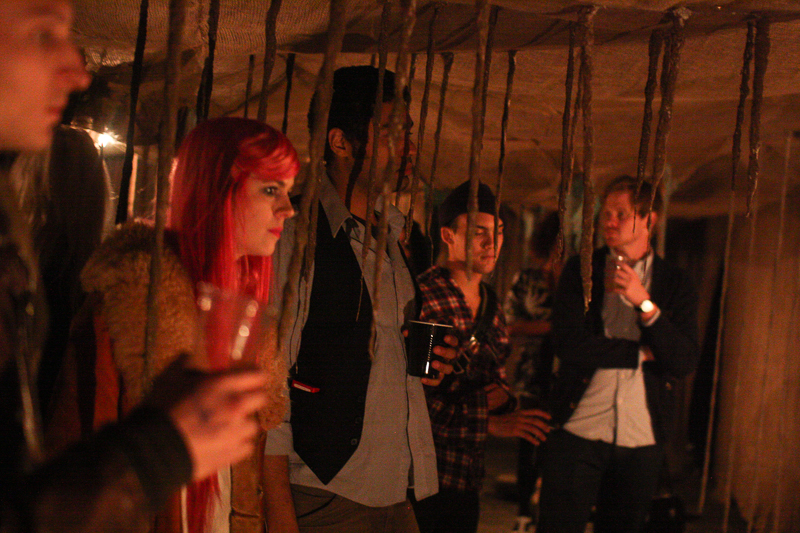the cave of archaic remnants
space type: art studio & performance venue | neighborhood: crown heights | active since: 2012 | links: facebook
The Cave is a huge basement studio in an artists’ loft building in Crown Heights. It’s a multifaceted space: part performance venue, part rehearsal studio, part gallery, part community gathering space, and it’s inhabited by a collective of musicians, dancers, sculptors, and artists.
Currently the Cave is being used as a set for an immersive dance performance called “The Cave: Archaic Remnants and the Methods of Transfer.” That name encompasses the space (the Cave), the dancers (Archaic Remnants), and the musicians (Methods of Transfer). The set, sculptures, and installation were designed by Laura Cuille, and nearly a dozen artists contributed music, dance, choreography, and more.
There will be one final performance of this unique site-specific piece on November 21st—buy tickets here. But first read my Q&A with Laura and two other contributors, Don and Arielle.
brooklyn spaces: Laura, how did the idea of
this performance come about?
Laura: We all came into this space a year
ago, and there was already music going on, and visual arts, and movement, but it
was really loose and divided. At the time I was making life-size sculptures, and
the idea of working with music and dance was in the back of my head. I was
actually looking for a different space to install the sculptures, but then I
realized I could put them here. So I started building the set and it just
clicked that this was something we could all do together and all build off of to
make it a whole.
brooklyn spaces: Don, how did the music come
together? Were you inspired by the sculptures?
Don: We were collaborating together but
separately, if that makes sense. The energy of creation ended up bringing our
practices to a solid line instead of two parallel lines. Laura and I are kind of
the same, as far as the way we work. I’m the audio version of her.
brooklyn spaces: Arielle, what’s your
role?
Arielle: I’m behind the scenes, helping.
I’m like the host.
brooklyn spaces:
How would you describe the show to someone who hasn’t seen it or will never seen
it? What are you trying to evoke with the performance?
Don: I would call it a Pompeii cave
sculpture with visual stimulation and movements to cinematic music. It’s not
that I wouldn’t call it dance, but I think it’s a little different. It’s almost
like live shadow puppets feeding off of the music.
Laura: I think the theme is really
universal. I was reading Carl Jung’s The Red Book while I was working
on this piece—I’ve always been inspired by music and literature to drive me in
my art. And I’ve always worked with the human figure because that’s all we can
really perceive of. With the Cave it came to me like a spark, because I was just
dealing with raw human emotion and psyche and all the things that are at the
root of what drive us and have not changed in the history of human existence.
All the other shit in society is basically just decoration and different ways to
confuse what’s actually driving us, which is really raw and primal. The symbol
of the Cave, and then the dance and the music—it explores all these themes, the
primal human condition, confusion and pain and all these things, and accepting
it more than trying to find a conclusion to it.
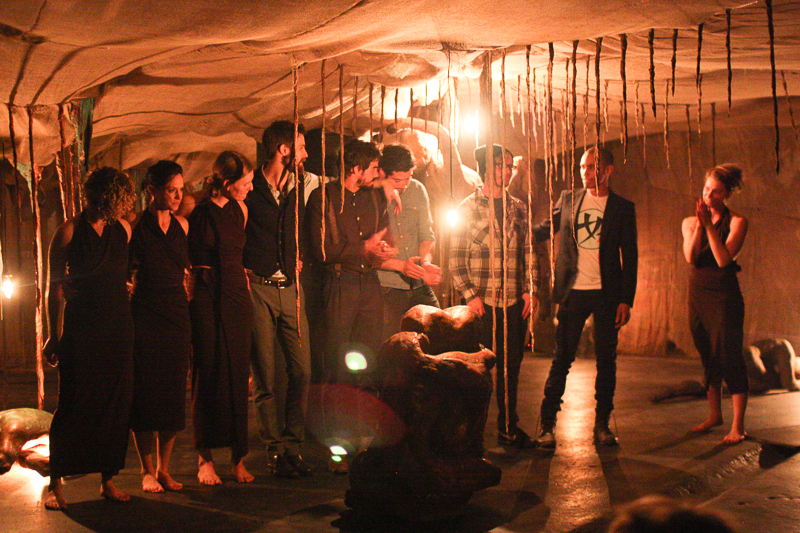 Arielle: Piña Bauche’s dance
troupe describes themselves as a “theatrical dance company,” and they use that
notion of theatre. There’s something so cinematic about the music in this piece,
there’s a sort of theatrical interpretation of movement, symbols that come
across with the sound as a sort of shadow and reflection of the dance. And the
music, it feels like a movie score. The way it builds and falls is really
cinematic. And also, the idea with this piece is that you stay in the Cave, you
never leave it. After most performances you leave a space immediately, so
whatever experience you’ve had or however it’s affected you, you take it with
you, alone. But for this, we’ve brought other artists and musicians to continue
performing after the performance, incorporating the vibe or energy from the
show. That way, for the audience, whatever feelings you’re having, you don’t
have to be isolated with them and you don’t have to just leave. So this isn’t an
isolated performance, it’s a performance within a context, within a space, and
within what’s to come afterward.
Arielle: Piña Bauche’s dance
troupe describes themselves as a “theatrical dance company,” and they use that
notion of theatre. There’s something so cinematic about the music in this piece,
there’s a sort of theatrical interpretation of movement, symbols that come
across with the sound as a sort of shadow and reflection of the dance. And the
music, it feels like a movie score. The way it builds and falls is really
cinematic. And also, the idea with this piece is that you stay in the Cave, you
never leave it. After most performances you leave a space immediately, so
whatever experience you’ve had or however it’s affected you, you take it with
you, alone. But for this, we’ve brought other artists and musicians to continue
performing after the performance, incorporating the vibe or energy from the
show. That way, for the audience, whatever feelings you’re having, you don’t
have to be isolated with them and you don’t have to just leave. So this isn’t an
isolated performance, it’s a performance within a context, within a space, and
within what’s to come afterward.
brooklyn spaces: Have any of you ever done a
site-specific, multi-faceted performance like this before?
Arielle: No, it was new for everyone
involved.
Don: But doing it all this in the space
made it really comfortable, almost like playing in my living room. Which is not
to say that I didn’t get nervous; I definitely did.
Laura: I agree, the process was so natural.
It just moved so easily and so magically.
brooklyn spaces: What are your thoughts on
being an artist in Crown Heights these days?
Don: I love it here. I think it’s the
perfect blend of people. It’s all ages, and it’s not loud; Bushwick, which I do
love, is just a lot louder. People are working really hard all over the place
there, but Crown Heights is a little more mysterious, there are all these random
things happening. There are a bunch of people doing really cool things right in
this building. There’s a dude building boats! Tug boats, like pure wood, cedar
and stuff. The people around here are so interesting, and there’s so much
passion.
Arielle: This neighborhood is a lot more
community based, and a lot less commercial. It just seems so natural.
***
Like this? Read about more unconventional performance spaces: Gowanus Ballroom, Gemini & Scorpio Loft, Brooklyn Lyceum, Dead Herring, Bushwick Starr, Cave, Chez Bushwick
